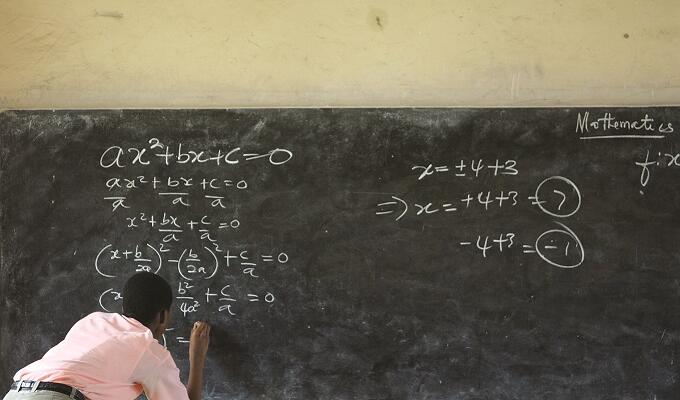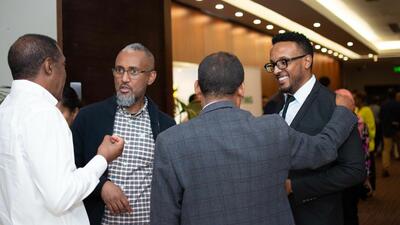

Interrogating Africa’s development numbers
In November 2010, Ghana Statistical Services announced new and revised gross domestic product (GDP) estimates. The estimated size of the economy was then adjusted upward by more than 60%, suggesting that in previous GDP estimates economic activities worth about US$13 billion had been missed.
While this change in GDP was exceptionally large, it did not turn out to be an isolated case. In April 2014, the Nigerian Bureau of Statistics declared new GDP estimates. GDP was revised upward to US$510 billion, an 89% increase from the old estimate.
CLOSING THE KNOWLEDGE GAPThese statistical events led to an increase in the attention being paid to the quality of macroeconomic statistics in low-income countries, especially African countries. Still, the numerical basis used to study African economies needs to improve in order to close Africa’s knowledge gap. This is to say we know less about growth and poverty patterns on the continent than many believe.
The problem of studying Africa by numbers is in part a simple knowledge problem: ignorance through numbers. There are accuracy problems. The data are often very weak guesses and have significant inherent errors. There are availability problems. Some countries consistently go missing regarding some datasets.
There are similarly simple problems of capturing complex social and economic realities and translating them into numbers. This matters with increased importance as we move from economic concepts to political and social concepts.
For researchers and data users, the message is that studying Africa by numbers can be misleading. Many number-based studies suffer from a disconnect with reality.
So how do scholars and policymakers do good research with numbers? How can they shed light on what they’ve got to work with?
FAULTY ESTIMATESThe concurrent large and seemingly abrupt changes in GDP have led to a reconsideration of the quality of the data needed to evaluate basic trends in growth and poverty. At the same time, according to the African Development Bank, such substantial revisions have understandably alarmed many observers. The World Bank’s chief economist for Africa has written about ‘Africa’s statistical tragedy.’
The persistent doubts about African countries’ ability to provide valid statistics may in part be a true reflection of the data. But it may also be a perception and credibility problem. The examples above are telling us that many statistical systems in developing countries are being updated after years of relative neglect. Yet the resulting improvements in the accuracy of the GDP data have often been met more with bewilderment than recognition of the GDP revisions as good news.
Not only are the countries richer than previously thought, but also the updating of benchmarks are tangible evidence of statistical systems being improved. They are read as confusing or even bad news because it complicates our knowledge and raises questions about what we actually know about income and growth in African economies.
In turn, those are good doubts to have because our numerical basis to study African economies is poorer than we would like to think.
BEYOND GROWTHThe malleability of the numbers does raise basic research questions about states’ ability to gather and disseminate statistics. Outdated methods and gaps in the underlying statistics is not something that pertains only to – nor to all – countries on the African continent. Nor is the issue of statistics and problems of data quality unique to low-income countries.
All other things being equal, there are grounds to believe that poorer economies will have lower-quality statistics. A poorer economy will have relatively fewer available resources to fund the functions of an official statistics office.
The paradox here is that in these very countries, numbers may have a greater importance. They are more dependent, both politically and financially, on international organizations and global governance – arenas where numbers are key motivators of the policy debate.
One of the striking problems in assessing the recent growth in sub-Saharan Africa is not only the actual rate of economic growth but also how this growth is distributed and whether it is inclusive. The big question is: what happens to poverty during growth?
The most important metric of poverty, judging purely in terms of influence, is the head count. But then our knowledge based on numbers is doubly biased: we know little about poor countries and even less about the impoverished people who live there. These problems emerge from a variety of sources. At the design level, an incompatibility exists between statistical categories conceived for industrialized societies with clearly defined property rights and formal employment relationships; and the developing contexts to which they are applied.
At the implementation level, a lack of capacity and record keeping at official statistical offices is exacerbated by the challenge of inaccessibility associated with poor and remote areas. Thus, numbers and indicators are especially inadequate in less developed countries.
INTERROGATING THE NUMBERSThere are additional characteristics pertaining specifically to African states that may justify a special regional focus. Just like one would question whether to expect the emergence of a similar form to the Japanese or Norwegian state in sub-Saharan Africa, one would also be careful in treating statistics from different state systems as factual equivalents.
Some statistical systems are built on registering and taxing land while others are not. Historically, African polities were typically land abundant and labour was relatively scarce. This has implications for the property rights regime. Land has typically not been subject to private property rights and states have not collected taxes on land holdings. This also has direct implications for the power of the state.
The deeper point here is that numbers need to be interrogated meticulously. Confronted with secondary data in the international databases, users need to conduct basic source criticism and ask questions such as as ‘who made this observation?’, ’Under what conditions was this observation made?’, ‘Is there any reason to think that the observation is biased?’. Failure to do so increases the distance between the observer and the observed and may lead to an insufficient balance between reality and the numbers.















